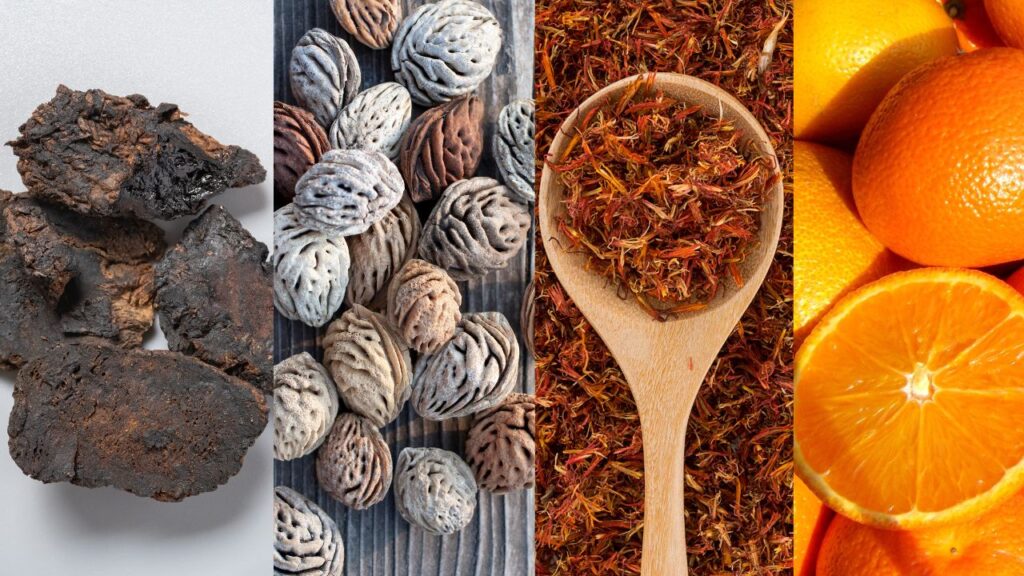Stasis Breaker is a Traditional Chinese Veterinary Medicine (TCVM) herbal blend commonly used to treat cancer in mass or nodule forms. It often has fewer side effects and interactions than common western treatments (chemo, surgery, etc.) and can be given as an oral supplement.
Key Takeaways
- Stasis Breaker for dogs is an herbal blend used in Traditional Chinese Veterinary Medicine to treat solid cancers.
- The Chinese herb that helps bleeding in dogs is Yunnan baiyao, which is frequently confused with Stasis Breaker. These are two different herbal blends.
What Is Stasis Breaker for Dogs?
Stasis Breaker is a proprietary blend of six Chinese herbs that was formulated by Dr. Huisheng Xie for veterinary use and is sold through Jing Tang herbals.
The formula is based on a traditional Chinese Medicine formula used in humans called Nei Xiao Wan. The exact amount of each component herb in the blend is unknown but according to the label, Stasis Breaker contains:
- Zhi Bei Mu (Fritiallaria, in the lily family)
- Mu Li (Oyster Shell Powder)
- San Leng (Sparganium, also known as bur-reed)
- E Zhu (Zedoaria, also known as white turmeric)
- Ban Zhi Lian (Scutellaria, also known as skullcap)
- Bai Hua She She Cao (Oldenlandia, also known as flat-top mille graine or diamond flower)
I should note that other Traditional Chinese Veterinary Medicine herbal formulations are also used to treat cancer such as Max’s Formula by Jing Tang, Stasis-Transforming Formula by Golden Flower, and Chih Ko and Curcuma by ITM.1 These formulas contain different herbal combinations than Stasis Breaker.
Evidence for Using Stasis Breaker
TCVM uses a different framework from western medicine to make a cancer diagnosis. In TCVM, cancer is considered the result of decreased flow and stasis of Qi and Blood. If the Qi or Blood are stagnated for an extended period of time, physical masses of tissue, such as a tumor, form.2
Stasis Breaker is used to correct the stagnation of Blood and Qi and, in theory, decrease tumor size.
There are very few scientific studies of the Stasis Breaker formula being used to treat canine cancer. There are some case studies that describe treatment protocols that utilize Stasis Breaker in combination with other treatments such as food therapy, conventional medications, chemotherapy protocols, and other TCVM herbs.11,12,13,14
Each of the individual components used in Stasis Breaker have been shown to have some beneficial effects in the treatment of cancer in human studies.
- San Leng (Sparganium) extracts have had anti-tumor, anti-inflammatory, and antioxidant effects.4
- Zhi Bei Mu (Fritiallaria) was cytotoxic in liver and breast cancer cells5 and inhibits tumor growth factor.6
- E Zhu (Zedoaria) can block cell proliferation and migration pathways to minimize the spread and growth of cancers.7
- Ban Zhi Lian (Scutellaria) has anti-tumor, anti-inflammatory,8 and antioxidant properties.9
- Bai Hua She She Cao has been shown to have immunomodulation benefits in studies.10
Common Uses of Stasis Breaker for Dogs
Stasis breaker is used to treat the TCVM condition of “Blood Stasis.”2 The individual components of Stasis Breaker have been found to have various anti-cancer effects in some human cancers such as glioblastoma,7 breast and liver cancers,5 and endometrial cancer.6
The use of Stasis Breaker has been described in treatment protocols for canine bone and oral cancers.13,14
Safety and Side Effects
There can be variability in the composition of Chinese herbal formulas. The individual components are often made by separate manufacturers.
There is an ongoing concern about the presence of heavy metals in TCVM supplements.15,16 However, there was a study that looked at various veterinary Chinese medicine herbal formulas, including Stasis Breaker.3 This study found no heavy metal contaminants or other cause for concern in the veterinary supplement samples tested.
Herbal formulations like Stasis Breaker are generally considered safe. The most common reported side effect seen with herbal supplements is gastrointestinal upset.
Can Be Given With
Stasis Breaker is often used in conjunction with common western treatments of cancer such as surgery, chemotherapy, and radiation.2
When to Not Use Stasis Breaker for Dogs
The literature cautions against using Stasis Breaker in pregnant animals4 and very weak or debilitated patients.
The use of any herbal supplement, including Stasis Breaker, should be included on your dog’s medical record as a medication or supplement.
How to Give Stasis Breaker to Dogs
Jing Tang herbals makes Stasis Breaker in powder, tea pill, capsule, or tincture form. The dose is based on your dog’s weight and is usually administered twice a day.
What If I Miss a Dose?
There are no complications from missed doses. Owners should just administer the recommended amount of Stasis Breaker at the next scheduled dose.
Storage and Handling
Herbal formulas such as Stasis Breaker should be stored in a cool, dry place away from heat or direct light.
Our Take on Stasis Breaker for Dogs
Stasis Breaker should not be used as the sole therapeutic agent to treat cancer, but it may have some benefit when used as part of an integrative approach utilizing TCVM.
The use of TCVM herbal support should be done under the guidance of a TCVM trained practitioner. You can use the American Holistic Veterinary Medical Association website to find a holistic veterinarian near you.
Topics
Did You Find This Helpful? Share It with Your Pack!
Use the buttons to share what you learned on social media, download a PDF, print this out, or email it to your veterinarian.






